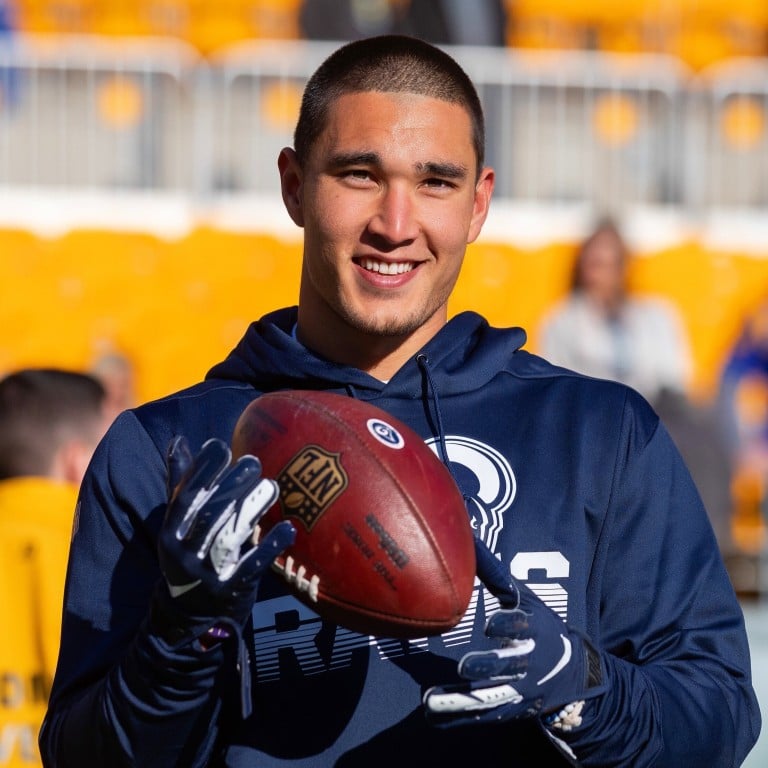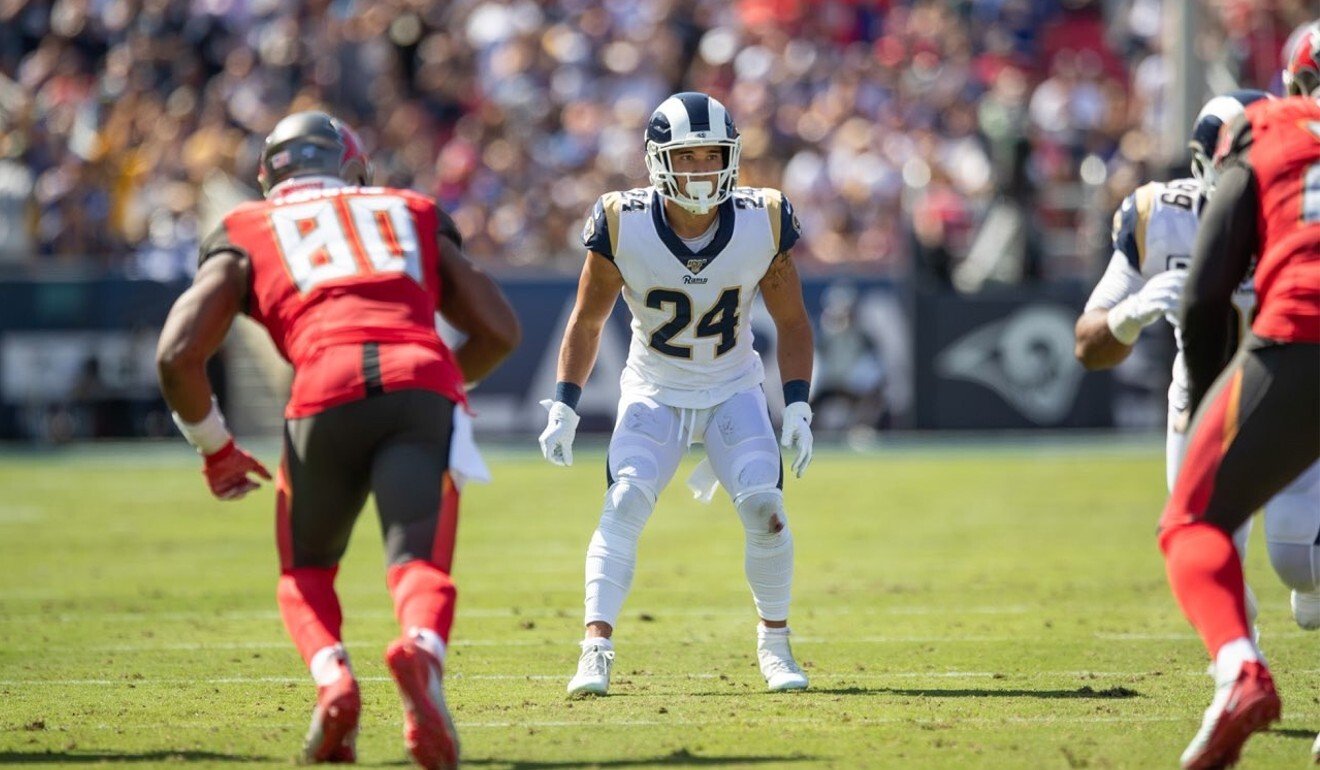
Chinese-American NFL trailblazer Taylor Rapp on being overlooked because of ethnic stereotypes
- Los Angeles Rams safety recalls knowing ‘in the back of my mind’ he would be overlooked in scouting combines
- Rapp wants to be a Jeremy Lin-like figurehead for athletes going through similar cultural complexes and ‘move the needle for Asians everywhere’
There was a time when Chinese-American NFL star Taylor Rapp was ashamed of his part-Asian heritage. The 22-year-old hard-hitting safety, who completed a successful rookie season with the Los Angeles Rams last year, spent most of his childhood trying to figure out why he always looked the odd-one-out in school and practice.
Growing up in Bellingham, Washington – a west coast city made up of nearly 80 per cent Caucasians, according to Data USA – Rapp and older brother Austin were often looked after by his Shanghai-raised grandparents while his Canadian-American father and Chinese mother worked.
And while Rapp – Chinese name Chi Youjin – welcomed the cultural symphonies within the household, it always felt like he was “putting on a mask” in the real world. He would be teased and taunted with all the typical xenophobic slurs, be it about the size of his eyes or being labelled “the Ch-word”. Naturally, this made cultural integration with peers that much more intimidating.
“There are not many Asian-Americans like me in Bellingham,” Rapp told The Post amid his strict covid-19 self-quarantine schedule. “It was definitely hard to embrace. For me, trying to play sports and make it to college in sports – there are not a lot of Asian-Americans to look up to in both college and pro sports.

“Every other kid had someone to look up to or relate to. I didn’t really have that because there weren’t that many Asians in, well, any sport,” he said, adding that his only Asian role model was Taiwanese-American NBA player Jeremy Lin.
As per The Institute for Diversity and Ethics in Sport’s 2019 NFL race and gender report card, the league’s player roster is made up of 58.9 per cent African-American, 26.8 per cent white, 20 per cent American Indian or Alaskan native, 1.5 per cent Hawaiian or Pacific Islander, 0.5 per cent Hispanic or Latino and 0.1 per cent Asian.
“I used that as fuel to the fire and that drove me to try to break that barrier; to show that it doesn’t matter where you came from as long as you work hard. I did, and I made it through division one college and made it to the NFL,” Rapp said.
Rapp’s parents – Chris and Chiyan – sent their sons to a local high school that was neither renowned for its cultural diversity nor football. Previous interviews document Rapp being openly mocked by peers while football coaches would often fail to spot his physical and technical talents. It was not until he was enrolled at the University of Washington where he began to see a few more familiar faces.
“Growing up I never really embraced my Asian culture and heritage as I feel I should have, but now I embrace it more than ever. As you grow up you gain perspective – there were a lot more Asian-Americans when I went to college at ‘U Dub’ – but growing up in a small city you didn’t see a lot,” he said.
With the odds already stacked against him, aspiring footballer Rapp would once again be overlooked for his Asian ethnicity. Simply entertaining the idea of an Asian playing collegiate or pro football cues eyebrow raising; imagine what it is like when their position is a defensive one requiring explosive strength and fearless attitudes.
“That’s one bad stereotype for Asians playing American sports, especially NFL football because Asians aren’t necessarily known to be the fiercest physical specimens that – I don’t want to categorise but – the typical footballer is,” said Rapp, who was described as “one of the country’s fiercest, hardest-hitting defensive backs” by ESPN last season.
“Growing up, I would always try to get recruited and try to go to combines and I would just know in the back of my mind that as an Asian, I didn’t look like a typical football player. That was definitely going through my mind when I was trying to go to the next level.”
Rapp went on to dominate his freshman year, scooping the 2016 Pac-12 Football Championship Game’s MVP and a host of team-of-the-year and defensive player-of-the-year awards. He was soon ranked Washington’s number one safety prospect before declaring eligibility for the 2019 NFL Draft.
“I think [the attitude towards Asians] is starting to change,” he said. “But there’s definitely a long way to go to change that narrative and perspective. It’s shifting a little bit but I want to be able to move the needle for Asians everywhere.”

Rapp started the 2019 season as the Rams’ substitute safety behind veteran Eric Weddle and fellow up-and-comer John Johnson III. A shoulder injury to the latter opened up the chance for Rapp to introduce himself to the world and retain his spot for the remaining games.
“Two Asian-Americans are playing at the highest level – it goes to show that Asians belong,” Rapp said. “It doesn’t matter what you like or where you came from, we’re able to show that on the biggest stage – the National Football League – we not only belong, but we can excel.”

“It feels amazing. Obviously, I wanted to play major division one college and NFL, but on top of that I wanted to be this role model for kids in the same position I was once in – who don’t have anyone to look up to. I want to be that figurehead,” he said.
“If I think back to when I was in high school trying to figure out where and who I was, I would definitely be proud of where I am. But it’s just the beginning. I just played my rookie season and I still have a lot to prove in the league to make sure I’m one of its top players.”

